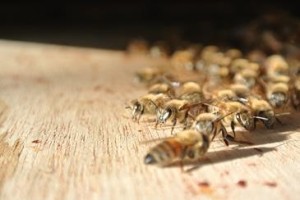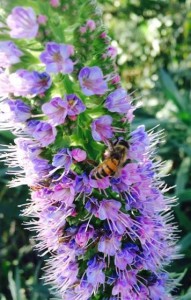There is no GPA in the hives, its pass or pass with “opportunity” for improvement. I don’t think you can really fail. Even if your hives died, your honey was full of bee legs and you got stung on your lucky mole 13 times – you still probably helped educate friends and families about bees, aided in pollination and have frames of honey ready to feed back to your next package in the spring (unless disease took the bees). I am starting this year out with only one hive due to some upcoming “competing priorities”. I might try catching a swarm or splitting a hive this year if the opportunity arises.
Worker Bee Tasks
- Install your package bees: I remember by first year doing this… I will admit it was tad nerve racking despite how calm the bees are, but I armed myself with key supplies (screwdriver, marshmallow, pushpin) and watched no less than a dozen You Tube videos. The sound of the bees being poured into the hive is memorizing, now, a bit like packing peanuts.
- Inspect and/or Feed current hives: When inspecting on a nice warm afternoon, you should see evidence of the queen laying eggs, bees bringing in pollen and still some honey stores.
- Don’t forget to track your activities and observations!
Queen Bee Ideas
- Watch for swarms and booming hives: Activity and colony size really pick up in April and May. Know what your local beekeeping organization has available as resources. In my neck of the woods, PSBA has a helpful page with a call list, tips and talking points (e.g. the bees aren’t angry).
- Know what nectars and pollens are available: Even though there are flowers all around, this time of year can be hard on bees as their colony grows, not all flowers and other plants produce nectar and the weather, especially Seattle rain, can often make it hard for the forager bees to get out. Your local beekeeping group is a great resource for this very geographically specific knowledge. This was really apparent to me on a March trip to San Diego where the bees were out in full force on plants I have never seen in Seattle. I will say though that rather than curse the early dandelion blooms, embrace them as a great bee and human food source and then figure out how to make a salad or tea.
- You have to eat, so make a honey recipe. Here is one of my most recent experiments.
Drone On
- Read a good novel with some bee or honey influences. This month I recommend Bees – Nature’s Little Wonders By Candace Savage.
- Attend your local beekeeping organization meeting. They will likely be doing a lot of education about swarms and nectar flows.
- Watch this excerpt from More than Honey of the queen’s virgin mating flight. If you have a new queen this spring, and many of us do, either by our intention or the bees’, this is his and her destiny.
Pollinator Champion
- Help educate people about swarms: They are not something to be afraid of, bee smart. Do not spray a swarm with pesticides or anything really. For SHAME Yankees and Red Sox – this faux pas really sent the wrong message.
- Join in the Great Sunflower Project: easy to grow, a great source of pollen and nectar for bees, provide a swatch of shade, pretty to look at and the spent heads are a tasty snack for chickens. I am starting my sunflower project this weekend and will be tracking progress all summer.
Just for fun
- Get out your crayons and print these fun coloring pages designed by the 2011 American Honey Princess. Yes, there is a pageant (with 71 pages of regulations) and no I won’t be competing. Alas, I am too old, even to be the Honey Queen….

